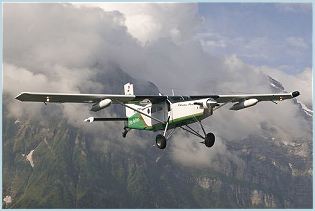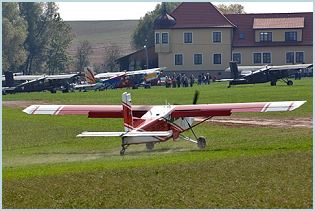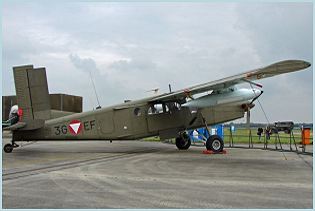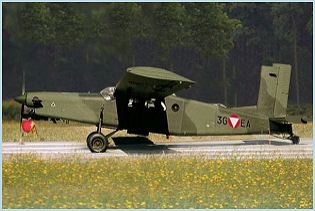|
|
||||||||||||||||||||||
| a | ||||||||||||||||||||||
|
PC-6 Pilatus Short Take-Off and Landing aircraft
|
||||||||||||||||||||||
|
|
||||||||||||||||||||||
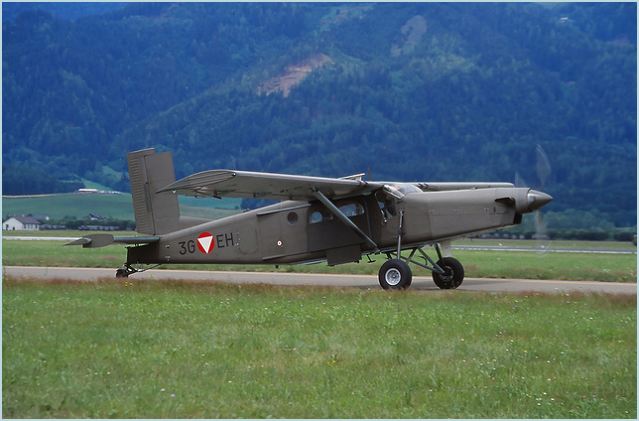 |
||||||||||||||||||||||
|
|
||||||||||||||||||||||
|
The Pilatus PC-6 Porter is a single-engine Short Take-Off and Landing (STOL) utility aircraft designed by Pilatus Aircraft of Switzerland. First flown in 1959, the PC-6 has been built in both piston engine and turboprop powered versions, and has been built both by Pilatus and by Fairchild Hiller in the United States. It remains in production as of August 2011. Its unique Short Take-Off and Landing (STOL) capabilities, reliability and versatility in all weather and terrain conditions have established the reputation of the PC-6 as a rugged utility aircraft. The Pilatus Porter PC-6 is fully capable of operating from different types of unprepared, rough and short airstrips, in remote areas, at high altitudes and in all climates. A simple but solid construction, proven systems and features, combined with precision Swiss workmanship result in the highest reliability and lowest maintenance possible. The Pilatus Porter PC-6 is fully capable of operation from different types of unprepared, rough and short airstrips, in remote areas, at high altitudes and in all climates. Specially designed options easily turn the PC-6 into a desert horse for operation on sandy, stony, soft or muddy ground. The PC-6 can also be equipped with skis or floats allowing operation on snowfields / glaciers or lakes. The ability to operate from different types of unprepared airstrips and in the harshest environments has proven the PC-6 to be the real “work- horse” of the air. |
||||||||||||||||||||||
| Main Variants: | ||||||||||||||||||||||
|
- Many variants are available.
|
||||||||||||||||||||||
| Technical Data | ||||||||||||||||||||||
| Design | ||||||||||||||||||||||
|
Although rugged and utilitarian, the PC-6 Turbo Porter is a high quality, life-long investment. With its high wing and propeller ground clearance, and its undercarriage with high bump absorption, the Turbo Porter is much less susceptible to damage from rough airstrips than aircraft with a conventional nosewheel-type undercarriage. The design uses conventional semi-monocoque construction techniques (frames, ribs, stringers, reinforcements and skin panels) for the wing, fuselage and empennage. The primary structure is built of 2024 aluminium alloy sheet and extrusion. These features combined with precision workmanship provide a high degree of interchange ability as well as the easy replacement of parts. All metal components are protected against corrosion by priming, painting, and plating/enameling before a tough polyurethane-based external paint is applied, protecting the Turbo Porter in all types of climate and conditions. The fuselage is equipped with a hinged door on both sides of the cockpit and a large sliding door on both sides of the cabin. Optional trapdoors can be fitted in the centre of the cabin floor. Each trapdoor can take a load of 150 kg (330 lb). The trapdoors can be opened and closed in flight by the pilot.
The Pilatus PC-6 has earned its reputation as a workhorse with a cabin volume of more than three cubic meters and a total payload of over 1,000 kg. A large sliding door on both sides of the aircraft allows easy access to the cabin for loading and removal of freight. When extra space is needed, the passenger seats can be quickly removed and stowed in the additional seat stowage area behind the cabin. The standard floor hatch enables a platform for a wide range of surveillance functions without the necessity of any design changes. |
||||||||||||||||||||||
| Avionics | ||||||||||||||||||||||
|
The brand new PC-6 glass cockpit features state-of-the-art Garmin G950 cockpit avionics. It sets unprecedented standards in simplicity, reliability and technology for pilots in all phases of the flight. The cockpit comprises a complete and ready-to-fly system, inspired by a low workload philosophy. Two large LCD screens provide clear visual input, allowing pilots to operate with ease and dispatch in a wealth of situations.
The main features of the cockpit are: – 10.4” Primary Flight Display (PFD) that provides all the important flight information for the pilot including attitude, airspeed, altitude and vertical speed and Nav/Com tuning. It also provides an HSI which displays all navigation information. – 10.4” Multi Function Display (MFD) that provides access to a multitude of systems and mission management pages including engine sensor data, topography, terrain, traffic, weather, airport charts and airways data. – An autopilot can be installed in the PC-6. The autopilot provides an automatic flight capability in all the phases of flight. – The Secondary Flight Instruments provide a fully independent back-up for attitude, altitude and airspeed in case of complete electrical failure. – Electrical and avionic equipment can be easily adjusted to customer requirements. – More options like TCAS, TAWS, radar, stormscope etc. are also available. |
||||||||||||||||||||||
| Propulsion | ||||||||||||||||||||||
|
The PC-6 Pilatus powerplant is a Pratt & Whitney Canada PT6A-27 turboprop. Known throughout the world, Pratt & Whitney Canada’s PT6A is the most reliable and thoroughly proven power plant in its class. The PC-6’s PT6A-27 is an advanced design of this engine family, with a thermodynamic power rating of 650 shaft horsepower (SHP), flat-rated to 550 SHP at take-off. The propeller is a Hartzell HC-B3TN-3D three-bladed (and on STC basis, a Hartzell HC-D4N-3P four-bladed), fully reversing and feathering constant-speed type, driven by the free turbine through a reduction gearbox. The propeller is equipped with an optional anti-icing facility.
|
||||||||||||||||||||||
| Missions | ||||||||||||||||||||||
|
Whether as a passenger aircraft, a platform for parachutists, an air ambulance or just for cargo transport, the Porter delivers the versatility to perform any role that comes its way.
The Pilatus Porter PC-6 passenger aircraft is able to carry up to ten passengers on triple benches or seven passengers on single seats. The PC-6 Para Dropping is one of the world’s favourite aircraft for para dropping. From an economical, organizational and safety point of view, the operation of the Porter with 10 parachutists has proven to be an ideal solution. The number of companies and drop zones operating the PC-6 is still growing, the PC-6 is the most preferred aircraft for parachutists. The PC-6 ambulance is the ideal platform for aeromedical missions. Large sliding doors on both side of the cabin allow easy loading and unloading of stretchers. The ability to operate from different types of unprepared airstrips and in the harshest environ- ments has proven the PC-6 to penetrate remote areas otherwise only accessible by helicopters but with the range and economy of a fixed-wing aircraft. With a useable volume of more than three cubic meters and a payload of more than 1’000 kg, the name “Porter” means what it says as the PC-6 is made for the job. Specially-made fixtures allow cargo to be fixed very easily and safely. |
||||||||||||||||||||||
| Specifications | ||||||||||||||||||||||
|
||||||||||||||||||||||
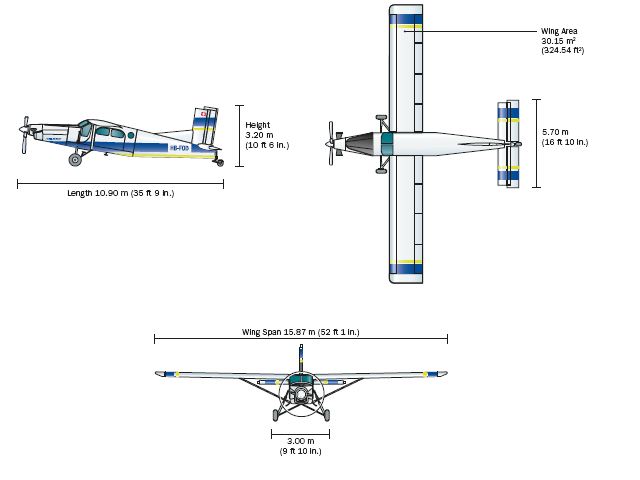 |
||||||||||||||||||||||
|
||||||||||||||||||||||
PC-6 Pilatus Short Take-Off and Landing STOL aircraft technical data sheet specifications intelligence description information identification pictures photos images video Switzerland Swis Air Force aviation aerospace defence industry technology
- Posted On

